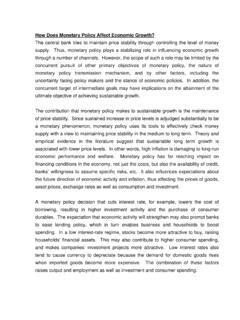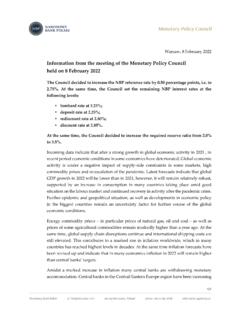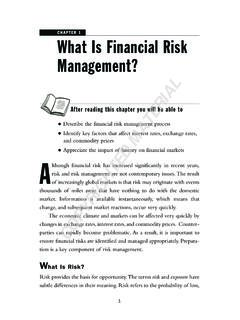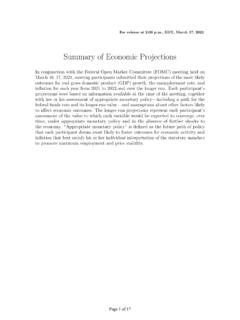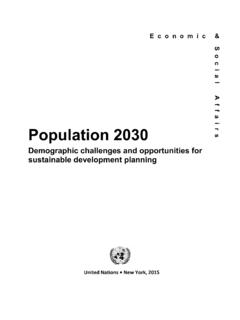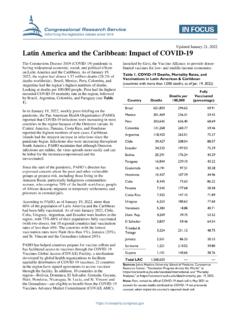Transcription of Management of non-financial risks - Bank for International ...
1 Management of non- financial risks Issues in the Governance of Central Banks 151 8 Chapter 8: Management of non- financial risks136 As reputation is vitally important to central banks, their risk appetites have traditionally been relatively low. Without a good understanding of the risks faced, risk aversion may lead to an excessive bias towards conservatism. But central banks are now benefiting from risk mitigation that arises from a more conscious assessment of the risks embedded in their operations and policies. Prompted by the need to be accountable to their stakeholders, and drawing on advances in risk Management techniques, they have become more systematic in their risk Management by adopting more structured approaches and enhancing the oversight of their risk Management activities. For some central banks, particularly those that supervise commercial banks, adoption of a more formal framework has also been driven by a desire to match the progress that commercial banks are making in implementing risk frameworks for compliance with Basel II.
2 The bottom line of central banks relates to policy rather than commercial outcomes. Nonetheless, as with commercial banks, risk Management at central banks is more advanced with respect to financial than to non- financial risks . Accordingly, this chapter focuses on the opportunities available to central banks to enhance, and thus gain more benefits from, their Management of non- financial risks . 136 This chapter was prepared mainly by Bruce White. It draws heavily on the unpublished report of a study group that reviewed the organisation of risk Management and methods for managing non- financial risk at central banks. The Main Issues The risk appetite of central banks is quite low, in part because they see risk as a threat to what is arguably their most important asset their reputation. The risk Management practices at central banks are more advanced with respect to financial risks than to non- financial risks .
3 The principal issues to be confronted in pursuing a more proactive approach to the Management of non- financial risks , the main focus of this chapter, are as follows: Are there net benefits to integrating the Management of financial risk with that of non- financial risk? How much does the dominance of policy objectives over financial objectives influence this choice? How centralised should central bank risk Management be? What roles should be played by top Management and the oversight board? Should the risk of getting policy wrong be handled by the relevant policy committee or by a separate risk Management committee? Most broadly, can central banks go beyond mechanical aspects of risk reporting to develop a genuine risk Management culture? Management of non- financial risks 152 Issues in the Governance of Central Banks 8 1. A risk Management framework Like many financial organisations, central banks often distinguish between financial and non- financial risk (Figure 46) and apply dedicated risk Management structures.
4 But even with separate Management structures for the two risk types, risk Management itself exhibits two key characteristics at central banks that have formalised it: Risk Management has been identified as a strategic priority and thus elevated and broadened to apply across the institution. The Management of operational and reputational risk and, to some extent, policy risk is wrapped within a standardised framework encompassing both financial and non- financial risk. Key elements in any risk Management framework include the identification of types of events that could compromise the achievement of the central bank s objectives, assessing the appetite for risk, putting in place measures to mitigate the risks that are deemed unacceptable, monitoring and managing risks over time, establishing contingency plans for risk events that may occur and regularly reassessing the adequacy of the risk Management framework.
5 As will be seen below, such arrangements at central banks are more developed with regard to financial risks . Figure 46 Risk categorisation model Source: BIS (2007a). Governance arrangements for risk Management typically consist of three components: overall responsibility, day-to-day Management and systems to achieve a consistent approach across the institution. The overall responsibility for risk Management lies with the institution s most senior level of Management . Day-to-day risk Management resides with departments, units and individuals. Consistency of approach across departments and units is promoted by adopting a common methodology; often (but not always), it is also promoted by a coordinating risk Management unit which, among other things, condenses detailed risk Management information into actionable monitoring reports. The following summary of risk Management frameworks begins with those for financial risks , partly for completeness but also to provide a background for the consideration of ways to strengthen non- financial risk Management .
6 Management of non- financial risks Issues in the Governance of Central Banks 153 8 financial risk financial risk Management arrangements for central banks are fairly similar to those in place in commercial banks. The main elements are: a risk Management committee, comprising senior executives and typically chaired by a deputy governor, with overall responsibility for risk Management frameworks and policies (as is the case at, for example, the Reserve Bank of Australia, the Central Bank of Chile, the Bank of France and the Bank of England); a framework of delegated authorities and risk limits (credit, duration and position limits); a separation of duties between front and back offices to facilitate effective control arrangements; a risk Management unit (or middle office) that monitors risk against limits and is responsible for risk analysis and support. This unit may be co-located with the portfolio managers or be separate and independent of them.
7 Internal control principles suggest the latter approach, although many central banks find that co-location is beneficial in terms of achieving appropriate integration of risk Management into business operations (and vice versa). However, central banks that adopt this approach acknowledge a need to ensure effective audit oversight; and an internal audit function, which has an independent compliance role, with direct reporting lines to the governor, or the supervisory board, or both. The middle offices, using dedicated tools and techniques and staff trained in financial modelling, are common in central banks that take active financial risks . Likewise, specialised operational risk officers are commonly located in divisions that give rise to operational and business continuity risks . Areas in which the potential for fraudulent activity is elevated employ reconciliation and checking procedures that are stronger than those used elsewhere in the bank.
8 And systems for reporting process failures tend to be more highly developed in areas in which weaknesses in business controls would cause the greatest problems. Operational risk As illustrated in Figure 46, operational risk encompasses a number of elements, including risks in relation to staff, IT systems, legal, regulatory and political risk, as well as human failure. Transactional processes (eg operations for monetary policy , foreign exchange reserves, and banknote printing and delivery) involve risk of error or fraud; support activities (eg IT, human resource Management , and physical security) may also cause financial , operational or image damages. Hence both transactional and support activities need to be subject to internal control procedures. Management activities, such as decision-making and project Management , are also prone to operational risk. But Management activities are more difficult and even awkward to treat within an operational risk framework, given that decision-making under uncertainty , with incomplete information, is what Management is about.
9 But the risks can be mitigated through the adoption of robust project Management and decision-making processes. Economic analysis and research processes are also more difficult to integrate into an operational risk Management process. Economic analysis inherently works in the Management of non- financial risks 154 Issues in the Governance of Central Banks 8 context of uncertainty ; the definition of an operational failure is difficult, and the assessment of the consequences is not easy, even at the qualitative level. That does not mean, however, that the Management of the risks cannot be improved. Obviously, risks linked to the availability and accuracy of data, the competencies of people, the efficiency of IT systems and the quality of internal procedures to meet qualitative and quantitative targets can be identified and managed. policy Risk Many central banks regard the evaluation of economic risks and uncertainty as part of the interest rate decision-making process (or its equivalent in other areas of policy ) and thus as a matter for the monetary policy committee rather than the risk Management committee.
10 Nonetheless, some central banks integrate policy risk Management and overall risk Management . For example, at the Bank of Canada, managers seek to identify and assess the key risks that could impede the fulfilment of the Bank s responsibilities and the achievement of its objectives. The results of the self-assessment process are summarised in a report to the Bank s Management and discussed with the Board. In another example, the HKMA had to consider risks to its reputation arising from consumer complaints about banking services, even though the matters in question went beyond the scope of the HKMA s supervisory function. The HKMA s Risk Committee examined the matter with a view to identifying options and avenues for addressing the risks , including the possibility of the need for change or refinement of policies. In contrast, the risk Management framework used by the Reserve Bank of Australia does not apply to the risks inherent in the Bank s core policy functions, which remain the responsibility of the respective policy boards.










